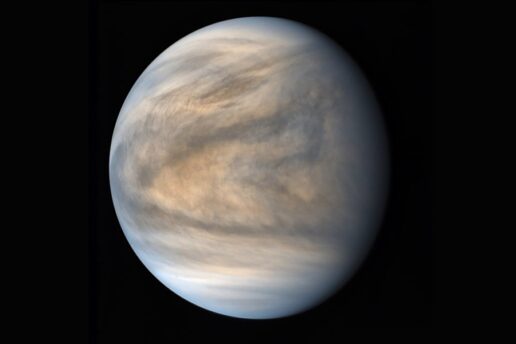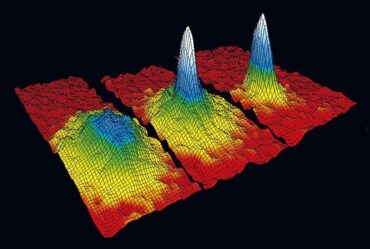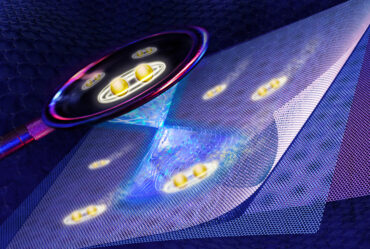
“Newer, nimbler, faster:” Venus probe will search for signs of life in clouds of sulfuric acid
Report led by MIT scientists details a suite of privately-funded missions to hunt for life on Earth’s sibling planet.
With multiple rovers landed and a mission set to return samples to Earth, Mars has dominated the search for life in the solar system for decades. But Venus has some fresh attention coming its way.
In a new report published today, a team led by MIT researchers lays out the scientific plan and rationale for a suite of scrappy, privately-funded missions set to hunt for signs of life among the ultra-acidic atmosphere of the second planet from the sun.
“We hope this is the start of a new paradigm where you go cheaply, more often, and in a more focused way,” says Sara Seager, Class of 1941 Professor of Planetary Sciences in MIT’s Department of Earth, Atmospheric and Planetary Sciences (EAPS) and principal investigator for the planned Venus Life Finder Missions. “This is a newer, nimbler, faster way to do space science. It’s very MIT.”
The first of the missions is set to launch in 2023, managed and funded by California-based Rocket Lab. The company’s Electron rocket will send a 50-pound probe on board its Photon spacecraft for the five–month, 38-million-mile journey to Venus, all for a three-minute skim through the Venusian clouds.
Using a laser instrument specially designed for the mission, the probe will aim to detect signs that complex chemistry is occurring within the droplets it encounters on its brief descent into the haze. Fluorescence or impurities detected in the droplets could indicate something more interesting than sulfuric acid might be wafting around up there, and add ammunition to the idea that parts of Venus’ atmosphere might be habitable.
“People have been talking about missions to Venus for a long time,” says Seager. “But we’ve come up with a new suite of focused, miniaturized instruments to get the particular job done.”
Seager, who also holds joint appointments in the departments of Physics and of Aeronautics and Astronautics, says that compared to Mars, Venus is the “neglected sibling” of astrobiology. The last probes to enter Venus’ atmosphere were launched in the 1980s, and were limited by instrumentation available at the time. And while NASA and the European Space Agency have missions to Venus planned for later in the decade, neither will search for signs of life.
“There are these lingering mysteries on Venus that we can’t really solve unless we go back there directly,” says Seager. “Lingering chemical anomalies that leave room for the possibility of life.”
These anomalies include significant levels of oxygen; unexplained ratios of sulfur dioxide, oxygen, and water; and the presence of cloud particles with unknown composition. More controversially, Seager was part of a team that reported last year a detection of phosphine gas in Venus’ atmosphere, which on Earth is produced only by biological and industrial processes.
Other astrophysicists have since challenged the phosphine detection, but Seager says the finding has overall brought positive momentum to the Venus missions. “The whole phosphine controversy made people more interested in Venus. It allowed people to take Venus more seriously,” she says.
Phosphine or not, the planned missions will focus on Venus’ atmosphere because it is the environment most likely to be habitable on the planet. While a runaway greenhouse effect left Venus’ surface a waterless hellscape hot enough to melt lead, clouds high in the atmosphere retain temperatures suitable for life as we know it.
“If there’s life on Venus, it’s some kind of microbial-type life, and it almost certainly resides inside cloud particles,” says Seager.
However, the clouds of Venus, though relatively temperate, pose other challenges to habitability. For one, they are primarily composed of concentrated sulfuric acid billions of time more acidic than any habitat on Earth. The atmosphere outside of the clouds is also extremely dry, 50 to 100 times drier than the Atacama Desert in Chile.
To assess the potential habitability of these acidic, parched clouds, the report team reviewed the literature and conducted a number of experiments. “We set out to do some new science to inform the mission,” says Seager.
The international team behind the report included researchers from Georgia Tech, Purdue University, Caltech, and Planetary Science Institute, and was funded by Breakthrough Initiatives. In addition to Seager, who led the team, MIT EAPS Research Affiliate Janusz Petkowski served as deputy principal investigator.
Drawing from experimental results, the report speculates that life could persist within sulfuric acid droplets in various ways. It could reside within vesicles of acid-resistant lipids, or it could neutralize sulfuric acid by producing ammonia, which can reduce the pH of sulfuric acid to a level tolerated by acid-loving microbes on Earth. Or, in theory, Venus cloud-life could rely on a biochemistry capable of tolerating sulfuric acid, distinct from anything on Earth.
Regarding dryness, the report points out that while the atmosphere on average might be too arid for life, there may exist habitable regions with relatively high humidity.
Based on their research, the team also selected the scientific payload for the mission — which was restricted to just 1 kilogram. Seager says they settled on an instrument called an autofluorescing nephelometer because it could get the job done and was small, cheap, and could be built quickly enough for the compressed mission timeline.
The instrument is currently being built by a New Mexico-based company called Cloud Measurement Solutions, and a Colorado-based company called Droplet Measurement Technologies. The instrument is partially funded by MIT alumni.
Once the probe is in Venus’ atmosphere, the instrument will shine a laser out of a window onto cloud particles, causing any complex molecules within them to light up, or fluoresce. Many organic molecules, such as the amino acid tryptophan, have fluorescent properties.
“If we see fluorescence, we know something interesting is in the cloud particles,” says Seager. “We can’t guarantee what organic molecule it is, or even be certain it’s an organic molecule. But it’s going to tell you there’s something incredibly interesting going on.”
The instrument will also measure the pattern of light reflected back from the droplets to determine their shape. Pure sulfuric acid droplets would be spherical. Anything else would suggest there’s more going on than meets the autofluorescing nephelometer.
But whatever the 2023 mission finds, the next mission in the suite is already being planned for 2026. That probe would involve a larger payload, with a balloon that could spend more time in Venus’ clouds and conduct more extensive experiments. Results from that mission might then set the stage for the culmination of the Venus Life Finder Missions concept: return a sample of Venus’ atmosphere to Earth.
“We think it’s disruptive,” says Seager. “And that’s the MIT style. We operate right on that line between mainstream and crazy.”


